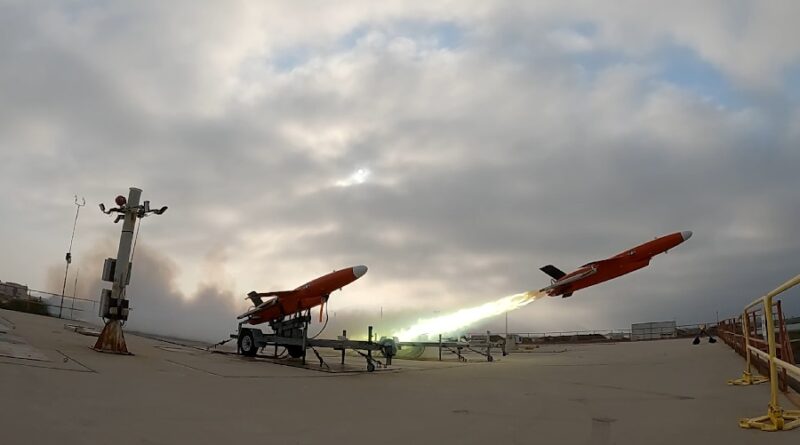Shield AI’s Hivemind Takes Flight: Autonomous Maneuvers with BQM-177A
In the realm of autonomous technology, exciting new developments have surfaced in the operations of the U.S. Navy and DT25 counter-UAV trials in Norway, led by the efforts of Shield AI. Utilizing their unique and sophisticated flight automation technology known as ‘Hivemind’, Shield AI managed to materialize autonomous maneuvers using Kratos BQM-177A aerial targets. The joint collaborative testing, carried out by Shield AI and NAVAIR (Naval Air Systems Command), was first unveiled to the public on September 22, 2025.
One of the core objectives of the test flight involving two BQM-177A aerial targets was to simulate more complex and realistic flight profiles and maneuvers, reminiscent of adversary tactics. By doing so, the assessment aimed to provide an intricate understanding of threat maneuvers and dynamics in an autonomous setting. Reinforcing these goals, an additional testing phase was executed on August 5 that scrutinized technological and operational aspects of the Collaborative Combat Aircraft (CCA) program.
Remarkably, the said testing venture revolved around the U.S. Navy’s inaugural beyond-visual-range (BVR) autonomy mission undertaken on a rapidly deploying platform. These efforts of advancing autonomous technology transpired under the Experimental Platform for Intelligent Combat (EPIC) project. On a broader scale, the trial played an instrumental role in advancing the capabilities of the CCA program.
The location of these significant tech trials was the revered Point Mugu Sea Range, California. The selection of this location follows a contract handed out to Shield AI by NAVAIR back in August 2024. The contract laid the groundwork for Shield AI to integrate their exceptional Hivemind autonomous pilot software and subsequently establish a resilient prototype test bed using the BQM-177A. This was done with a focus on demonstrating the feasibility of autonomous operations during flight stages.
The collaboration between NAVAIR and Shield AI doesn’t seem to be ceasing anytime soon, as plans for follow-up testing later this year have been announced. Evidently, the common vision of fostering advanced autonomous vehicles is driving both entities to stretch the boundaries of current technological capabilities. The ultimate goal? Enhancing the potential of autonomous operations.
The innovative Hivemind software is not just intriguing for its autonomy. It also allows the aircraft to operate independently, leveraging real-time sensor data and onboard processing to make decisions, navigate routes, and execute maneuvers without the need for remote input. This leverages AI to a level where the necessity for human intervention is minimized, thus maximizing efficiency.
Interestingly, Hivemind stands out in the industry due to its open and modular platform design. This fundamental quality of accommodation and adaptability enables the software to be beneficial across a diverse range of Department of Defense (DoD) systems, thereby making it a sought-after piece of advanced technology.
Turning our attention to the other side of the globe, Shield AI also revealed an autonomous test of the Airbus Defense and Space’s DT25 target drone conducted in Andøya, Norway. This trial was proceeded using the Hivemind software. Impressively, the tests in Norway reaffirmed Hivemind’s ability to commandeer a wide array of aircraft types.
The BQM-177A’s Hivemind integrated tests boasted some impressive features. Among the two BQM-177As tested, one demonstrated Advanced Vehicle Control Laws (AVCL). Simultaneously, the sister aircraft was used to exhibit additional self-reliant behavior. This test could reinvent modern aircraft efficiency and reactions.
Deconstructing the concept of AVCL, NAVAIR details that it equips aircraft with the ability to execute complex, dynamic maneuvers. It does so by translating high-level mission orders into real-time flight control inputs. Greg Wise, the PMA-208 program manager, emphasized that this technology can shape more effective interactions with fleet assets and cultivate improved test and training scenarios.
The BQM-177A drone is noted for its ability to simulate modern subsonic anti-ship cruise missile threats. In addition, it supports an extended scope of missions due to its internal and external payload options. This wide applicability plays a crucial role in developmental and operational testing for fleet training.
In their press release, Shield AI quoted PMA-281 program manager Capt. Todd Smith, citing that future air combat will inevitably depend on machine decision-making executed at machine speeds. As a result, their heavy and proactive investment in autonomy aims to deliver smarter, adaptable capacities to the fleet before an urgent need arises.
In a timeframe of just three months, Hivemind was assimilated with the DT25. The subsequent successful flight demonstration test in Norway saw the DT25 autonomously tracking a live-flying adversary aircraft, known colloquially as the ‘red agent.’ This tracking was maintained both in permissive and degraded environments, showcasing the software’s robust capabilities.
Lastly, the demonstration underscored a counter-UAS mission profile, exemplifying the Hivemind’s capabilities to autonomously identify, track, and respond to airborne threats. Altogether, as the field of autonomous technology advances, the contributions of Shield AI to fly autonomously promise a future where sophisticated aerial tactics with robust adversarial threat-representative maneuvers might become the new standard.

